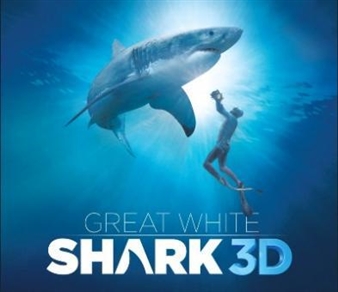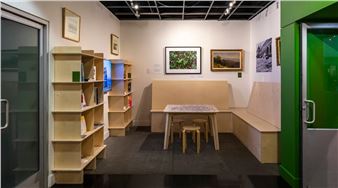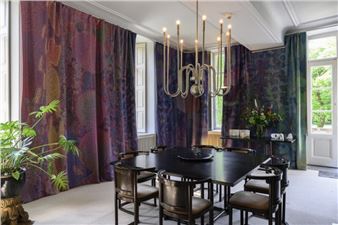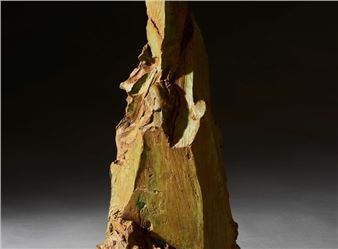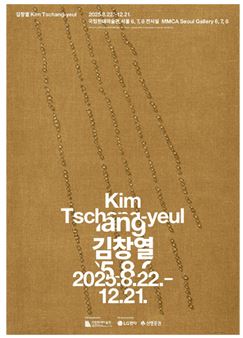Jae Ho Jung
CHOI&CHOI Gallery presents Jae Ho Jung‚Äôs solo exhibition ‚ÄėHow long have I been I here‚Äô, on view from 13 January through 25 February 2023. This is Jung's first solo exhibition with the gallery following the three-person show ‚ÄėMoment to Monument‚Äô in Cologne, 2020, and the group exhibitions ‚ÄėBerlin meets Seoul‚Äô and ‚ÄėFLOWER‚Äô in Berlin and Seoul in 2022. The artist is known for his realistic depictions of Industrial-era buildings that remain as remnants of Korea‚Äôs history of modernisation. This exhibition features new works from his series portraying the area of Eulji-ro, Seoul, which he has continued over the years.
Eulji-ro was developed during Korea's rapid period of economic growth. It contains traces of its dynamic history but has since become an aging time capsule after decades of neglect. In today‚Äôs era where skyscrapers built through vast capital and wealth dominate the skyline with their glitz and glamour, the area‚Äôs remaining buildings testify to the forgotten stories of a bygone generation like lines on the face of an elder. The buildings‚Äô worn out facades reflect the country‚Äôs attitude of denial and neglect toward its own tumultuous past and urge us to remember the lives that once dwelled behind the concrete walls ‚Äď the lives that endured and persevered. Jung accurately captures the visual characteristics of the district, and he has already presented these works in several exhibitions. Jung often paints the buildings from the front view as he faces these slowly vanishing relics. At first glance, his hyper-realistic paintings may seem dispassionate in their documentative approach, archiving the visual state of the neighbourhood down to its miniscule details. But the crux of his work does not lie in the superficial, but rather the "odour of life" that has permeated each surface. There is a distinct note of reverence and nostalgia as he collects traces of the countless, nameless people who lived through the transitional era.
After several years of continuing the series, Eulji-ro no longer remains mere subject of observation. "A place becomes scenery once someone lays their eyes on it," says the artist. For him, Eulji-ro is now a companion that has been with him through years. Its social significance as a cultural monument no longer takes centre stage and his own personal thoughts and emotions have come to play a larger role, making the task of recreating it all the more delicate. As the focus of his work gradually veered away from the specificities of the time period, Jung paid increasing attention to the process of painterly representation itself, striving to paint with the sensibility and consideration that befit his muse. Painting a scene that is under increasing threat of complete demolition also evokes a heightened sense of urgency than before. Perhaps in a futile attempt to resist the approaching fate, he freezes in his compositions the snowy winters, heavy monsoons, and sun-drenched Sunday mornings that he has shared with the district. But unlike the seasons that come back each year, the winter of his Eulji-ro now exists only in paintings. Facing a neighbourhood on the verge of becoming a distant past, the artist confronts his years spent immersed in it and captures the odour of his own life that has permeated the surface.
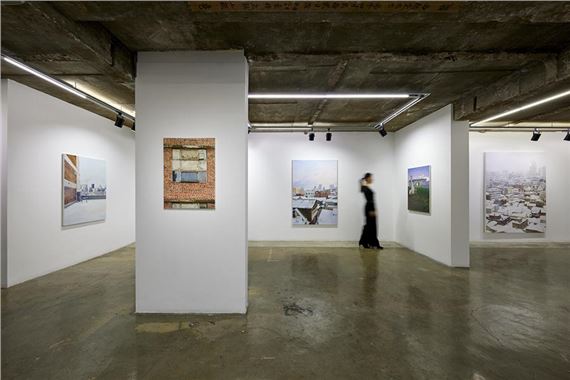
Recommended for you
CHOI&CHOI Gallery presents Jae Ho Jung‚Äôs solo exhibition ‚ÄėHow long have I been I here‚Äô, on view from 13 January through 25 February 2023. This is Jung's first solo exhibition with the gallery following the three-person show ‚ÄėMoment to Monument‚Äô in Cologne, 2020, and the group exhibitions ‚ÄėBerlin meets Seoul‚Äô and ‚ÄėFLOWER‚Äô in Berlin and Seoul in 2022. The artist is known for his realistic depictions of Industrial-era buildings that remain as remnants of Korea‚Äôs history of modernisation. This exhibition features new works from his series portraying the area of Eulji-ro, Seoul, which he has continued over the years.
Eulji-ro was developed during Korea's rapid period of economic growth. It contains traces of its dynamic history but has since become an aging time capsule after decades of neglect. In today‚Äôs era where skyscrapers built through vast capital and wealth dominate the skyline with their glitz and glamour, the area‚Äôs remaining buildings testify to the forgotten stories of a bygone generation like lines on the face of an elder. The buildings‚Äô worn out facades reflect the country‚Äôs attitude of denial and neglect toward its own tumultuous past and urge us to remember the lives that once dwelled behind the concrete walls ‚Äď the lives that endured and persevered. Jung accurately captures the visual characteristics of the district, and he has already presented these works in several exhibitions. Jung often paints the buildings from the front view as he faces these slowly vanishing relics. At first glance, his hyper-realistic paintings may seem dispassionate in their documentative approach, archiving the visual state of the neighbourhood down to its miniscule details. But the crux of his work does not lie in the superficial, but rather the "odour of life" that has permeated each surface. There is a distinct note of reverence and nostalgia as he collects traces of the countless, nameless people who lived through the transitional era.
After several years of continuing the series, Eulji-ro no longer remains mere subject of observation. "A place becomes scenery once someone lays their eyes on it," says the artist. For him, Eulji-ro is now a companion that has been with him through years. Its social significance as a cultural monument no longer takes centre stage and his own personal thoughts and emotions have come to play a larger role, making the task of recreating it all the more delicate. As the focus of his work gradually veered away from the specificities of the time period, Jung paid increasing attention to the process of painterly representation itself, striving to paint with the sensibility and consideration that befit his muse. Painting a scene that is under increasing threat of complete demolition also evokes a heightened sense of urgency than before. Perhaps in a futile attempt to resist the approaching fate, he freezes in his compositions the snowy winters, heavy monsoons, and sun-drenched Sunday mornings that he has shared with the district. But unlike the seasons that come back each year, the winter of his Eulji-ro now exists only in paintings. Facing a neighbourhood on the verge of becoming a distant past, the artist confronts his years spent immersed in it and captures the odour of his own life that has permeated the surface.
Artists on show
Related articles
CHOI&CHOI Gallery presents Jae Ho Jung‚Äôs solo exhibition ‚ÄėHow long have I been I here‚Äô, on view from 13 January through 25 February 2023.

 ARTISTS
ARTISTS









